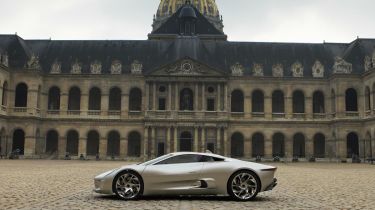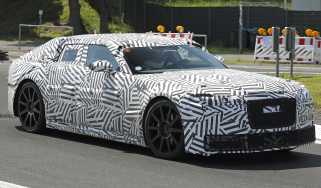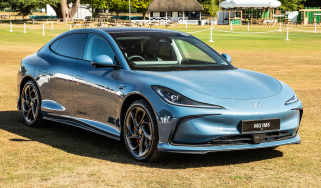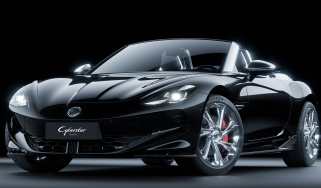Jaguar C-X75 to get 500bhp
The Jaguar C-X75 supercar will be powered by a 500bhp 1.6-litre, twin-charged four-cylinder hybrid
Jaguar has revealed that its all-new hybrid supercar, the C-X75, will feature a 1.6-litre, twin-charged four-cylinder engine – producing 500bhp.
In exclusive discussions with our sister magazine evo, the British carmaker announced the astonishing figures set to be associated with its upcoming flagship model.
Two high-powered electric motors, mated to a seven-speed automated manual gearbox, will boost the combustion engine, which is capable of revving to 10,000rpm.
As you’d expect, performance claims are impressive, with Jaguar confident the C-X75 will crack 0-60mph in three seconds, and 100mph in just six. It is also predicted that the supercar will comfortably break the all-important 200mph barrier.
Through its partnership with the Williams F1 team, Jaguar has constructed the car entirely from carbon fibre. It will use aluminium only to strengthen the crash structures towards the front and rear. In addition, the C-X75 will incorporate KERS and regenerative brake technology.
The batteries can be charged both on the move, as well as through a domestic power supply – giving the flagship Jaguar a definite everyday usability not seen before on a supercar. This should allow the C-X75 to travel almost 40 miles on electric power alone.
The twin-charged engine uses a supercharger to boost low rev performance, and a turbocharger once it passes 5,500rpm. This technology helps to maintain smooth power delivery all the way to 10,000rpm.
Jaguar’s reason for opting to use such a small capacity engine is due to its continued affiliation with motorsport. It expects high-performing 1.6-litre four-cylinder units to form the base of motor racing (including F1) in the very near future.
To save weight, Jaguar has gone for a single clutch gearbox. Mounted transversely, it drives the rear wheels and gives the car a low centre of gravity –directly helping the handling characteristics of the C-X75. Power for the two electric motors is sent to the front wheels using an independent clutch and allows the Jaguar to effectively operate as a four-wheel-drive supercar.
In its final stages of development, Jaguar hopes to have the car ready for market by 2014. It plans to limit production to 200 units, each with a staggering price tag of around £800,000.
Bob Joyce, group engineering director at Jaguar-Land Rover said: “Having an engine which revs to 10,000rpm provides the aural excitement. That’s essential in a car like this because we need to connect with the driver on an emotional and environmental level for this car to be a success.”
Find a car with the experts







